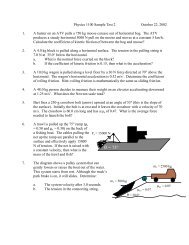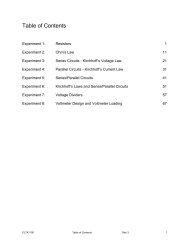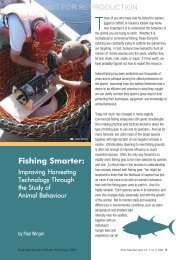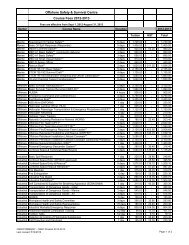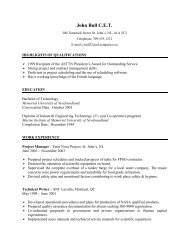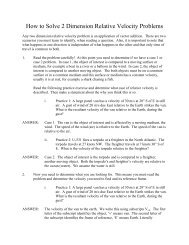You also want an ePaper? Increase the reach of your titles
YUMPU automatically turns print PDFs into web optimized ePapers that Google loves.
Kinematics(ULV)Situation: Consider driving on a long and straight section of highway using cruise control.We could describe this as motion with a steady pace. (The speedometer always readssome steady value.)Now consider starting a car from a stoplight. How does this motion differ fromcruising along the Trans-Canada? Is stopping a car at a red light fundamentally differentfrom starting? Here we are dealing with an object whose speed is steadily changing.The general purpose of this lab is to formally describe the different types ofmotion. We are concerned with a description of “how” the object moves and are notconcerned with “why” it moves.Materials:A motion detector, metre stick, tractor, track, MPLI and Graphical Analysis.Model 1 (Uniform Linear Velocity)Purpose:To find a mathematical model that describes the relationship between position andtime, for all objects with steady (pace) motion.Procedure:• Enter MPLI and open a file called “Kinematics.exp”. (For more information on usingMPLI see Appendix C.) Plug a motion detector into channel A on the MPLI box andcalibrate the motion detector following the instructions in Appendix C (Calibration mayhave been completed by demonstrator.)• To collect your data, place the tractor in front of the detector. Clear the surroundingarea of possible reflectors. Turn on the tractor and hold it in place at 40 cm from themotion detector (start line).• Have your partner click start on the computer and release the tractor when you hearthe motion detector collecting data. It is not necessary to stop the data collection, it stopsautomatically at the end of the specified time interval.• When the data collection is complete, draw a line of best fit for the graph.→ click on Analyse in the pull down menu. Select Automatic Curve Fittingand choose the model that best represents your graph (see Appendix A).Remember, if the trend is horizontal use statistics.Have your graph checked by an instructor. When you are given the OK, print the graph.- 5 -






